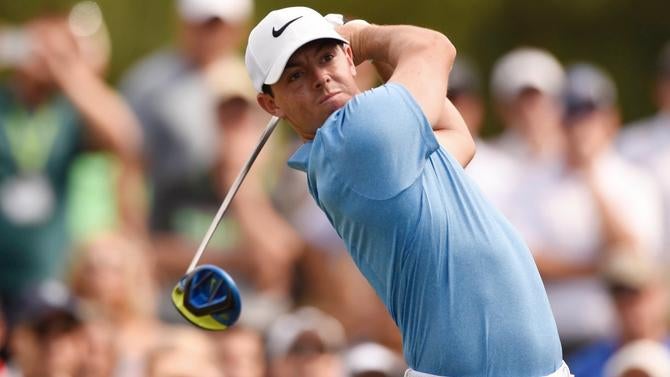"Strokes gained" are dirty words in some golf circles. Billy Horschel once said strokes gained tee to green is the least valuable statistic in golf. Most fans shrug the numbers of as advanced metrics only for geeks like myself. But we really can learn a lot from these numbers.
As a refresher, let me remind you what we're actually looking at when we look at strokes gained. From the founder of the statistic, Mark Broadie:
Here's a brief explanation of strokes gained: If a stroke starts on a tee where, according to historical data, the average score is four, and if it finishes at a position in the fairway where the average strokes to hole out is 2.8, then the tee shot has moved the ball 1.2 strokes closer to the hole with just one stroke. The single tee shot has gained 0.2 strokes compared to an average tee shot, so it has a "strokes gained" of 0.2. Strokes gained recognizes that sinking a 20-foot putt represents a better performance than sinking a three-foot putt, even though they both count as a single stroke on the scorecard. Strokes gained assigns a number to this intuition.
Until recently, the PGA Tour only had two strokes gained categories -- putting and tee to green. Putting told us a lot, while tee to green sort of summarized "everything that was not putting." Until now. The PGA Tour has been collecting data and recently broke its strokes gained tee to green stat into three distinct categories.
- Strokes gained off the tee
- Strokes gained on approach shots
- Stokes gained around the green
This is awesome news because now instead of just saying, "Well, that guy is good at, uh, not putting," we can say, "that guy is great off the tee but poor at approach shots."
Let's look at the top five players in each category so far in the 2015-16 PGA Tour season.
Strokes gained off the tee
- Rory McIlroy: 1.17 strokes per round gained on field off the tee
- Bubba Watson: 1.15
- Dustin Johnson: 1.10
- Justin Rose: .86
- J.B. Holmes: .73
Strokes gained on approach shots
- Adam Scott: 1.73
- Henrik Stenson: 1.18
- Hideki Matsuyama: 1.14
- Kevin Na: .87
- Bubba Watson: .84
Strokes gained around the green
- Matthew Fitzpatrick: .84
- Jordan Spieth: .57
- David Toms: .56
- Padraig Harrington: .56
- Aaron Baddeley: .56
And just for good measure, let's look at strokes gained putting.
Strokes gained putting
- Steve Stricker: 1.07
- Jason Day: 1.01
- Phil Mickelson: .87
- Jamie Donaldson: .82
- Adam Hadwin: .76
Let's go back to Broadie quickly before we discuss.
A strokes gained analysis of millions of shots in the PGA Tour's ShotLink database shows that approach shots account for about 40% of the scoring advantage of the top forty pros on the tour. Within the broad approach shot category, it's the longer approaches (shots that start between 150 and 200 or so yards from the hole) that contribute the most to the scoring advantage.
So looking at these numbers is incredibly interesting because now we have some context for what players are doing well. For example, Spieth is driving it better and better around the greens in 2016 then he was in 2015. So what's the issue? He's actually not putting as well but his approach shots are also down .6 strokes gained per round. He's gaining -.01 strokes per round on the field. He's basically a worse than average player with his irons right now.
McIlroy fasinctes, too. He's obviously the best driver on the planet, but his around the green game is good too (currently No. 9). Yet he ranks No. 65 in approach shots. Rory McIlroy! How can it be?! His proximity to the hole stats back that up. McIlroy is averaging about 37 feet from the cup on his approach shots. He's been leaky with his irons, and it's hurt him.
You can see how this data informs the way we think about players. It's a common narrative that Spieth is a much better putter than he is off the tee or with his irons. The data doesn't back that up. In my head, Rory is the best on the planet with his irons. The data doesn't back that up.
So instead of being scared of new numbers and what they mean, I'm looking forward to using the data to my advantage to better understand the sport as well as the golfers who play it.






















